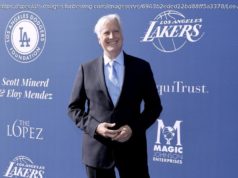This time its businesses and not consumers who are the focus of the augmented reality glasses from Google.
SAN FRANCISCO — The original augmented reality spectacles are back. But this time, the business of Google Glass is business.
After a rough consumer launch in 2013 that at times saw wearers of Google’s innovative $1,500 wearable computer derided as «Glassholes, » the company quietly spent the past few years partnering with software companies and around 50 businesses to build out the enterprise possibilities of Glass.
«We first saw signs of Glass’ potential for businesses in the Glass Explorer days, » project lead Jay Kothari wrote in a blog post Tuesday announcing Glass Enterprise Edition’s broader availability through a range of global partners that deploy AR glasses to businesses.
«We’ d been seeing incredible developments with Glass in the workplace and now the Glass product team is back at X (Google’s special projects division) , » said Kothari. «We’ ll be collaborating with the Google Cloud team and our partners to help customers across a variety of business sectors make the most of Glass.»
Kothari’s post notes how teams at GE Aviation use the revamped Glass — which features improved battery life, a better camera and Glass-to-Glass connectivity — to perform complex mechanical tasks that previously required consulting a massive paper manual. DHL package sorters have increased their efficiency by 15% by getting information projected into their line of sight via Glass, thereby freeing up their hands.
Glass had a rocky start. Beyond the cultural slams, the AR specs immediately generated both privacy (was someone photographing me?) and safety concerns (wearing Glass meant having a small TV screen in the upper right corner of your field of view.
After deciding to regroup and shift away from a consumer focus in 2015, the Glass team left the X division and was put under the stewardship of Tony Fadell, the Nest electronics founder that Google brought in house with its $3.2-billion Nest purchase.
But just over a year later, Fadell resigned from Google. The one-time Apple engineer cited a desire to be at the forefront of new projects, but media reports described Fadell’s no-nonsense personality as creating a difficult work environment at Google.
In some ways, Google is playing catch up in a game that it created. A range of companies specialize in enterprise-focused AR devices, including ODG, Epson and Meta. Microsoft has created perhaps the most sophisticated AR device, the $3,000 HoloLens, but it remains only in the hands of developers at the moment.
AR’s cousin VR, virtual reality, raced ahead in the past years thanks to dedicated devices such Oculus Rift and myriad smartphone-based VR products. But most industry experts still believe AR will eclipse VR in terms of use-cases and spending once costs come down and the form factor becomes seamlessly integrated into existing glasses.
Google’s Glass looks similar to the first version and is powered by software hidden inside the product’s temple. A small, externally facing camera can capture images that can be shared with other Glass wearers within a company. A tiny projection device screens anything from health data to manufacturing schematics, information that previously required users to turn away from the task at hand.
Efficient use of AR devices in an enterprise application can potentially reduce errors and speed up processes.






